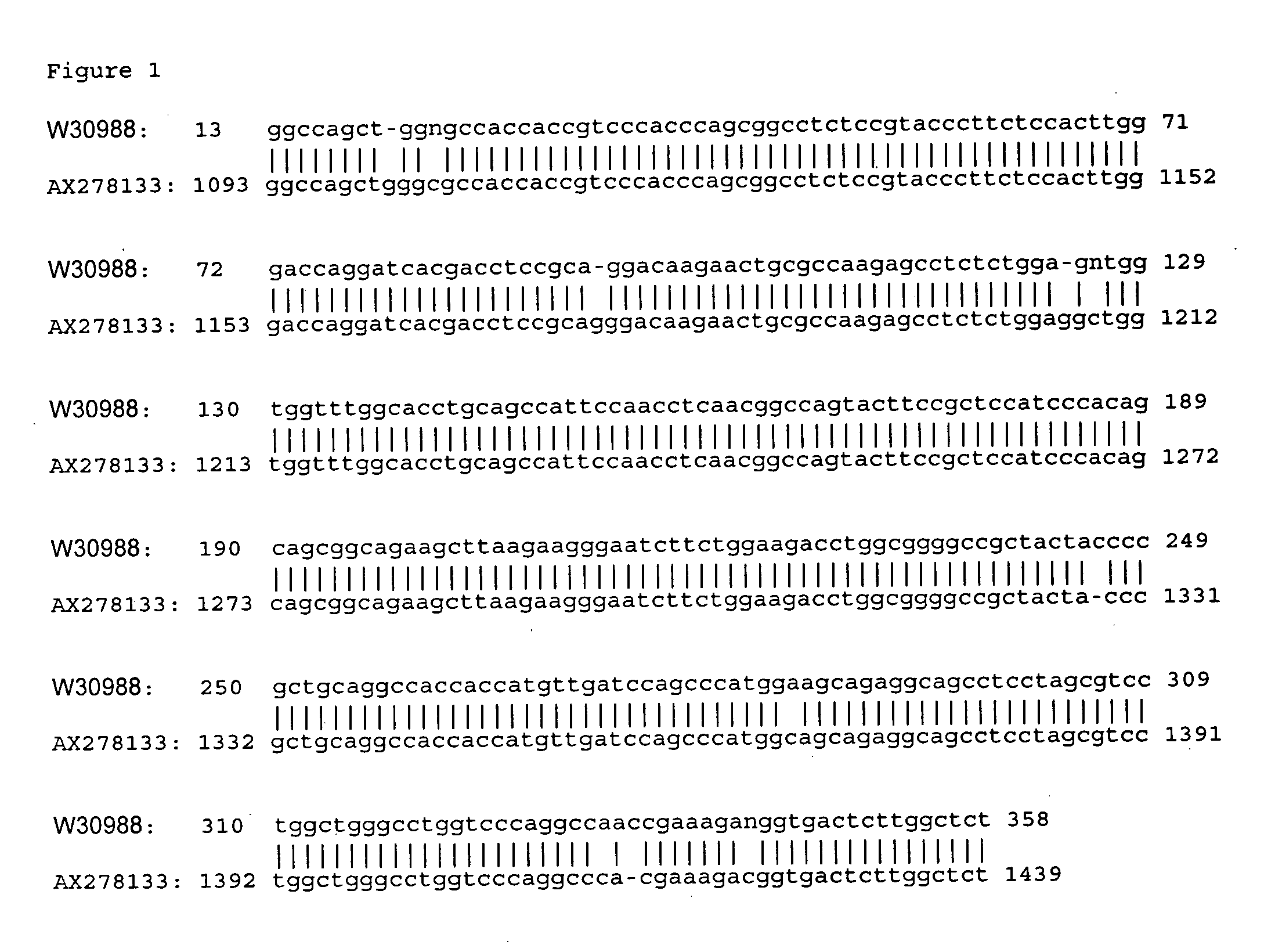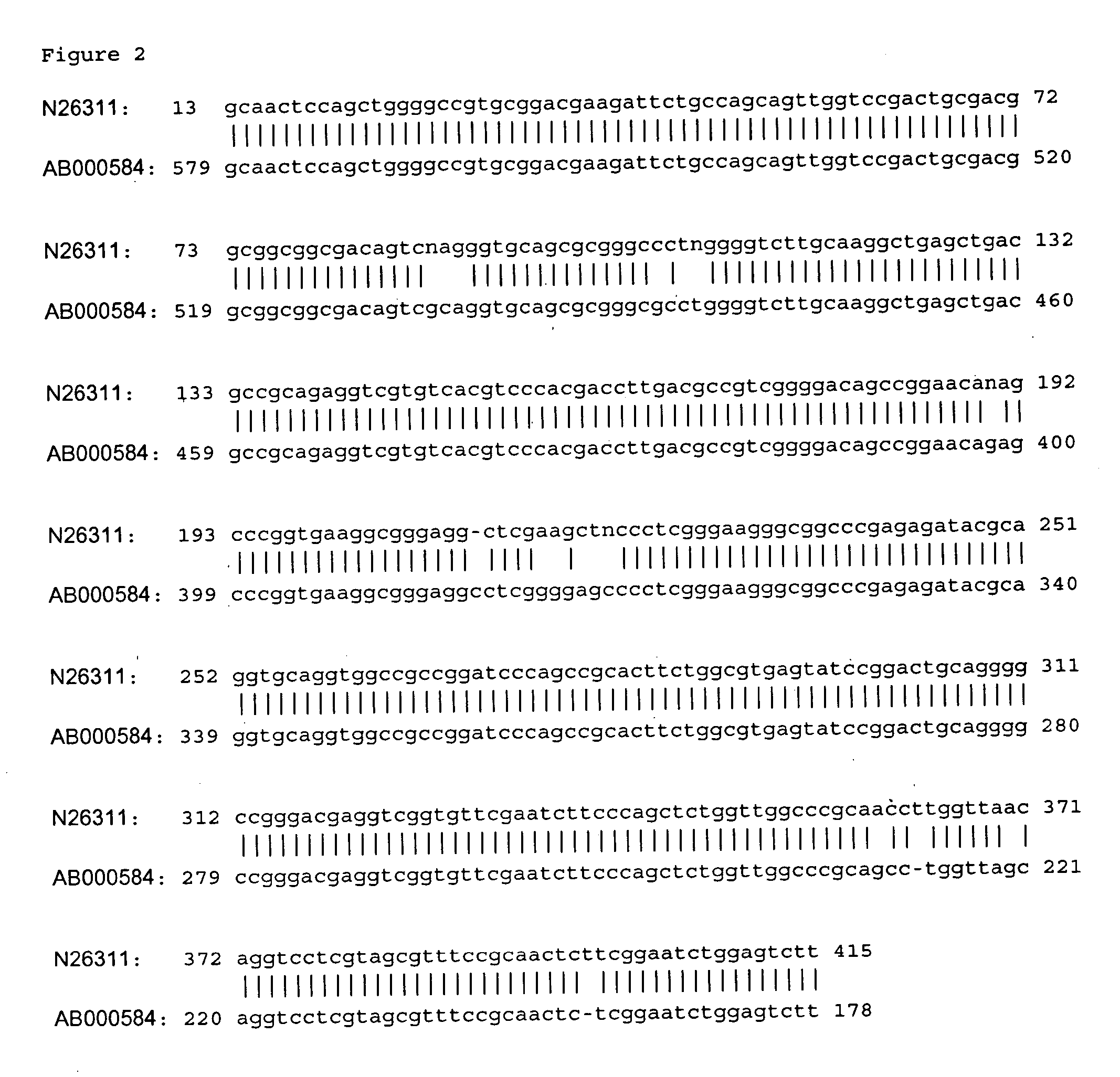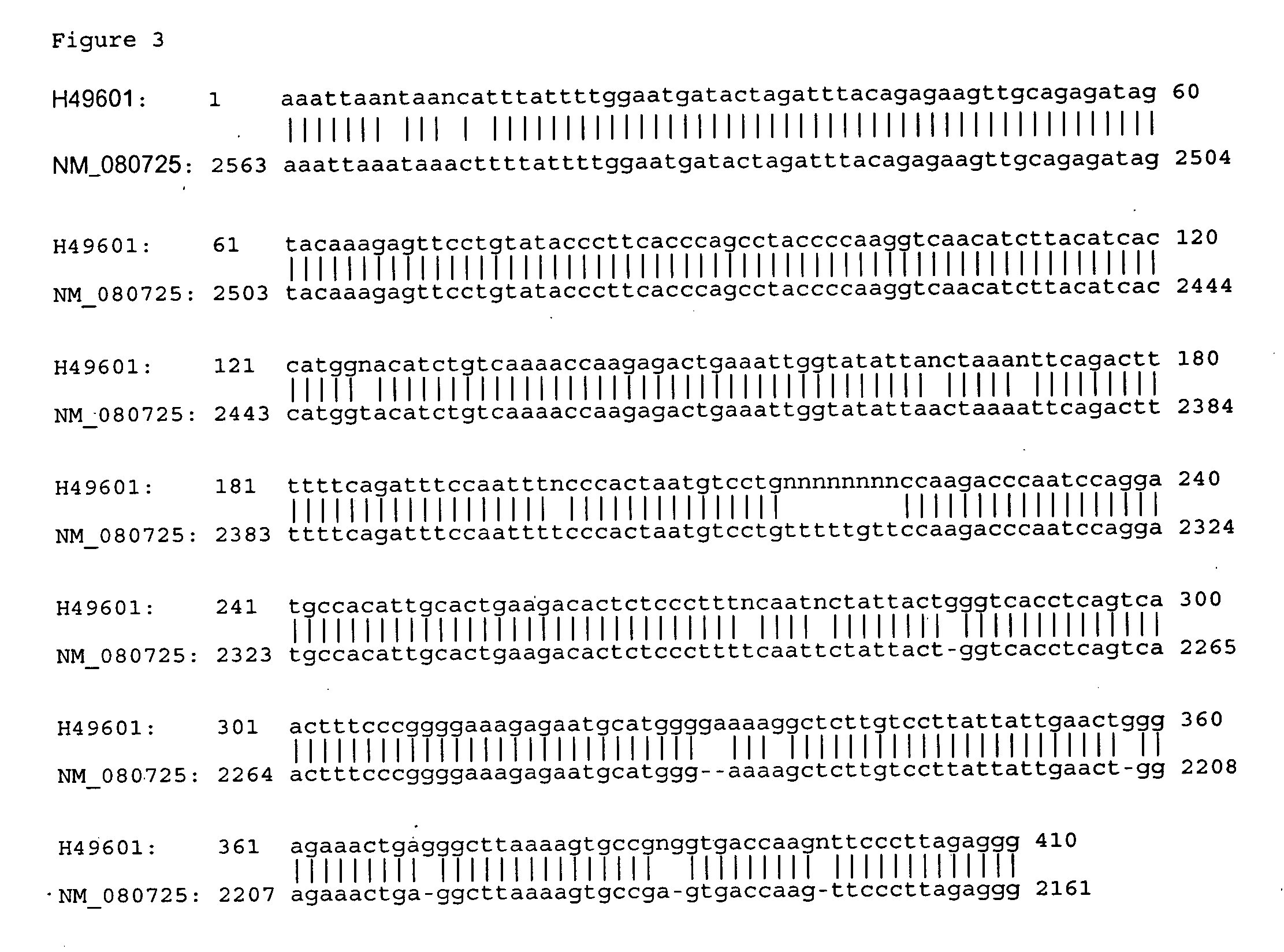Methods of using peroxisome proliferator-activated receptor alpha target genes
a technology of activated receptor and proliferator, which is applied in the direction of drug composition, peptide/protein ingredient, metabolic disorder, etc., can solve the problems of major public health problems
- Summary
- Abstract
- Description
- Claims
- Application Information
AI Technical Summary
Benefits of technology
Problems solved by technology
Method used
Image
Examples
example 1
Identification of Target Genes Regulated by PPARα Agonists in Human Cells
[0127] DNA microarray technique was used to identify the target genes regulated by fibrates or other PPARα agonists in human cells.
[0128] Human hepatocyte HuH7 cells, which are epithelial cells of liver, were obtained from Japan Health Science Research Resources Bank (Osaka, Japan). Human primary adipocytes, which are connective tissue cells specialized for the synthesis and storage of fat, were obtained from Zen-Bio, Inc (Research Triangle Park, NC). Human primary skeletal muscle cells (SKMC) were obtained from Cambrex Bio Science (Walkersville, Md.). PPARα agonists, Wy14643 (Agatha, et al, 2000, Archives of Biochemistry and Biophysics 380:353-359) and fenofibrates were obtained from Cayman Chemical (Ann Arbor, Mich.) and Sigma (St Louis, Mo.), respectively.
[0129] Human HuH7 cells were cultured in Dulbecco's Modified Eagle Medium with 10% Fetal Bovine Serum (Gibco, N.Y.). Cells were treated with charcoal-st...
example 2
Bioinformatic Characterization of Genes PA9, 13 and 21
[0137] Bioinformatic programs sponsored by the National Center for Biotechnology Information (NCBI; http: / / www.ncbi.nlm.nih.gov) were used in the analysis of DNA sequences. The GenBank database (http: / / www.ncbi.nlm.nih.gov / Genbank / index.html) was used to retrieve DNA sequences. The SwissPro database (http: / / www.ebi.ac.uk / swissprot) was used to retrieve protein sequences. The BLAST program (http: / / www.ncbi.nlm.nih.gov / BLAST) was used for gene search. The Motif program (http: / / motif.genome.ad.jp,) was used for searching functional DNA structures (motifs, regulatory sequences, domains, etc.). The LocusLink program (http: / / www.ncbi.nlm.nih.gov / LocusLink) was used for searching sequence and descriptive information about genetic loci. In addition, the Wisconsin Package (GCG, Genetics Computer Group) was used for sequence editing and sequence assembly (SEQED), sequence comparisons (GAP, BESTFIT, PILEUP), and DNA sequence translation (T...
example 3
Reduced PPARα Resulted in Reduced Induction of Gene Expression of Pa9, 13 or 21
[0149] Human SKM cells with reduced PPARα expression was first constructed using siRNA technique. Gene expression of Pa9, 13, and 21 in these cells was then measured to confirm that these genes were indeed regulated by PPARα.
[0150] SiRNA oligos specific to PPARα were designed and used to knock-down or reduce the expression level of PPARα in human SKMU cells following procedures known to those skilled in the art (Brummelkamp et al., 2002, Science, 296: 550-553). Four sets of siRNA oligo were originally designed using GenBank accession number S74349 (human peroxisome proliferator activated receptor alpha, cDNA; PPARα) as the template, and the software, Target Finder (Ambion, Austin, Tex.). Among the four sets of oligos, two sets were found to be more efficient and were chosen for PPARα-knockdown studies. The sequences for the two sets of siRNA correspond to 907 bp to 927 bp (SEQ ID NO: 21, 5′-AACGATCAAG T...
PUM
| Property | Measurement | Unit |
|---|---|---|
| Molar density | aaaaa | aaaaa |
| Molar density | aaaaa | aaaaa |
| Molar density | aaaaa | aaaaa |
Abstract
Description
Claims
Application Information
 Login to View More
Login to View More - R&D
- Intellectual Property
- Life Sciences
- Materials
- Tech Scout
- Unparalleled Data Quality
- Higher Quality Content
- 60% Fewer Hallucinations
Browse by: Latest US Patents, China's latest patents, Technical Efficacy Thesaurus, Application Domain, Technology Topic, Popular Technical Reports.
© 2025 PatSnap. All rights reserved.Legal|Privacy policy|Modern Slavery Act Transparency Statement|Sitemap|About US| Contact US: help@patsnap.com



